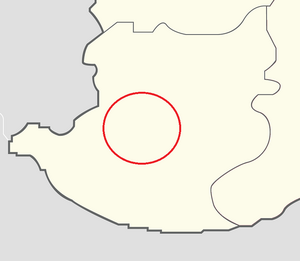Kubagne Archipelago
The Kubagne Archipelago is a paleogeographic region of central Kubagne, Yonderre. Whilst currently deep within the modern nationstate Yonderre, the region represented an archipelago within an inland sea of the supercontinent Sarpolevantia during the early Cretaceous period c. 130-120 million years ago. The Kubagne Archipelago was made significant through paleontological expeditions to the sites of the previous archipelago that have uncovered important discoveries from which paleontologists could extrapolate much not only about early Cretaceous paleobiology and paleoecology but which also confirmed established theories regarding island syndrome, not least regarding insular dwarfism and island gigantism in the Cretaceous period. The Kubagne Archipelago is thus made significant beceause very few other definite islands and archipelagos are known from before the Cretaceous–Paleogene extinction event 65.5 million years ago, and none have been studied as thoroughly as the Kubagne isles.[1]

The Kubagne Archipelago was probably located at least 200 kilometres (120 mi) from the nearest land mass. The Kubagne Archipelago itself was surrounded primarily by a deep marine basin, unlike some of the surrounding islands and land masses which were surrounded by shallow seas that is thought to on occasion have frozen solid enough that it allowed migration between the islands. During the Barremian, the climate of the Kubagne Archipelago was subtropical, with an average temperature of 20–25 °C (68–77 °F). The island experience marked rainy and dry seasons, but despite this, the plant life on the island was mainly tropical in nature. Carbon isotopes indicate dry woodland conditions. This seeming contradiction between the seasonally dry climate and tropical plant species can be explained by the fact that tropical plants can thrive in a seasonally monsoonal environment today as long as they have access to sufficient amounts of water year-round, and the Kubagne environment seems to have been dominated by braided rivers and lakes. Early rock layers are dominated by volcanic deposits, but these are absent in higher layers, indicating that volcanic activity dropped off during this time.
A mass mortality site dated to c. 120 million years ago outside Sainte-Catherine has generally been attributed to the flooding associated with the end of the archipelago, as the Kubagne islands were swallowed back into the sea. The site, known as the Sainte-Catherine bone fields, was littered with disarticulated skeletons of dinosaurs like Kubantadens as well as pterosaurs and small mammals.
Paleofauna
The Kubagne Archipelago has long been a focus of study for Yonderian paleontologists, notably Jour & Leon who dedicated much of their reasearch to the explorations of its rocky sediments. Paleontoligcal digs in the Kubagne Archipelago have unearthed at least twelve species of dinousaurs and several species of pterosaurs thought to be indigineous to the isles. These insular reptiles differed from their continental relatives due to island syndrome, which describes the differences in morphology, ecology and physiology seen in insular species compared to their continental relatives. Many taxa exhibit island dwarfism, becoming much smaller than their mainland relatives, while others exhibit island gigantism, notably the joaunsaurid dinosaur Kubantadens.
See also
Notes
- ↑ One notable exception being the island-continent Great Kiravia which separated from Pangea around the turn of the Triassic-Jurassic.